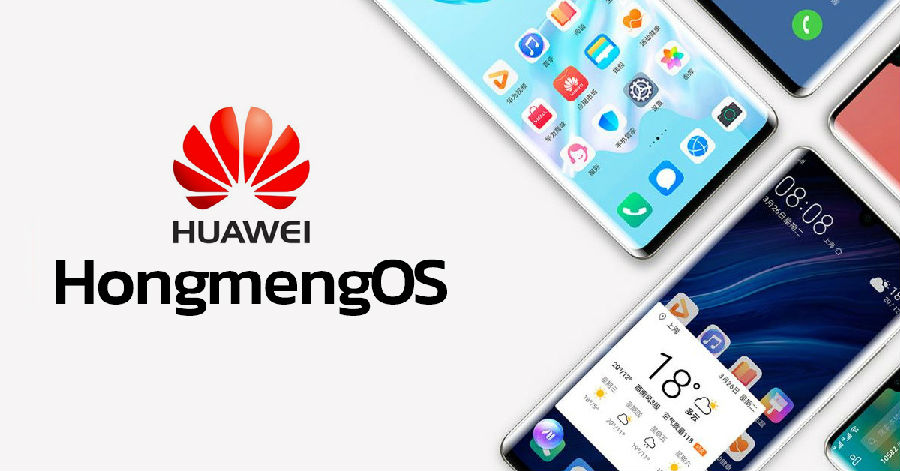古典神話的現代力量
When HarmonyOS, the Chinese self-developed operating system for Huawei mobile devices, was released on Aug 9, it quickly became a hot topic on social media. Many believe it not only represents the rise of the country as a tech power, but also pays tribute to classical Chinese culture by naming the system "Hongmeng" in Chinese.
鴻蒙系統是用于華為移動設備的國產自研操作系統。在8月9日正式推出之后,它立刻便成為了社交媒體上的熱門話題。許多人都認為,該操作系統不僅代表著中國作為科技大國的崛起,系統名字“鴻蒙”更是向中華古典文化致敬。
"Hongmeng" is a classical word from the Taoist text Zhuangzi. In the ancient times of Chinese myths and legends, "Hongmeng" was used to describe the original state of the universe before matter existed.
“鴻蒙”來源于道家典籍《莊子》中的古語。在中國神話傳說中的遠古時代,“鴻蒙”一詞用于形容物質形成之前宇宙的原始狀態。
For HarmonyOS, "Hongmeng" indicates the developers' aim to make an innovative operating system, unlike any other.
對于鴻蒙系統而言,“鴻蒙”意指開發者們立志創造出一個有別于其他系統的創新型操作系統。
Besides "Hongmeng", Huawei has also registered many of its products under the names of legendary creatures from Chinese mythology. For example, the company's Kirin mobile chip got its name after a mythical lucky monster called "Qilin". And its server chip is called "Kunpeng", a mythical creature that changed from a fish into a giant bird.
除了“鴻蒙”之外,華為還用中國神話中的神獸名字注冊了旗下的許多產品。比如,該公司麒麟手機芯片的名字來源于神話中一種名為“麒麟”的瑞獸。服務器芯片則取名“鯤鵬”,是一種能從魚化為巨鳥的神獸。

Many Chinese internet users and media have praised Huawei's use of these names, "as they stand for Chinese wisdom and ancient people's imagination and spirit of exploration", Global Times noted.
國內許多網友和媒體都盛贊華為所使用的這些名字,“因為它們代表了中國人的智慧以及古代人民的想象力與探索精神,”《環球時報》指出。
In fact, Huawei is not alone in using traditional culture for modern ventures. Ne Zha, the new film, also portrays traditional culture in a modern context. Earlier this month it became the biggest animated movie in China and was called "the glorious light of domestic anime".
事實上,并非只有華為將傳統文化與現代元素相結合。新片《哪吒之魔童降世》也通過現代背景呈現了傳統文化。本月初,該片成為了中國影史上票房最高的動畫電影,被稱為“國漫之光”。
The movie is loosely based on the well-known work of classical Chinese mythology The Investiture of the Gods. Unlike his attractive heroic character in previous cinematic works, Ne Zha is shown as a rebellious underdog, who has to overcome hardship and his dark fate to become a hero.
這部電影借鑒了著名的中國古典神話《封神演義》。和先前電影作品中惹人喜愛的英雄形象不同,哪吒在這部電影中是個被人瞧不起的叛逆者,歷經種種艱險,不懼坎坷宿命,最終才成為了一位英雄。
The main character, Ne Zha, has also changed his attitude, becoming "the epitome of the rebellious but righteous youth". Many young Chinese people can relate to Ne Zha, who encourages them to become dream-chasers and fate-changers.
主角哪吒的態度也發生了變化,成為了“叛逆卻又正直的年輕人的象征”。許多中國年輕人都與哪吒有同感,他鼓勵了他們勇敢追夢,改變命運。
Indeed, the long history and splendid classic works have given China a profound culture. Myths and legends are the creative works of tremendous imagination. As Global Times put it, today by revisiting and incorporating a modern context, "ancient mythology has the power to ignite contemporary imagination in young people". After all, imagination is the beginning of creation.
的確,悠久的歷史和輝煌的古典作品賦予了中國深厚的文化底蘊。神話傳說是恢弘的想象力凝結而成的創作作品。正如《環球時報》所指出的那樣,如今通過回顧并與現代元素相結合,“古代神話擁有了燃起現代年輕人想象力的力量”。畢竟,創造是從想象開始的。



